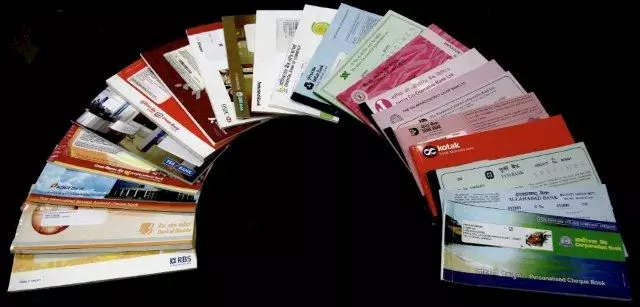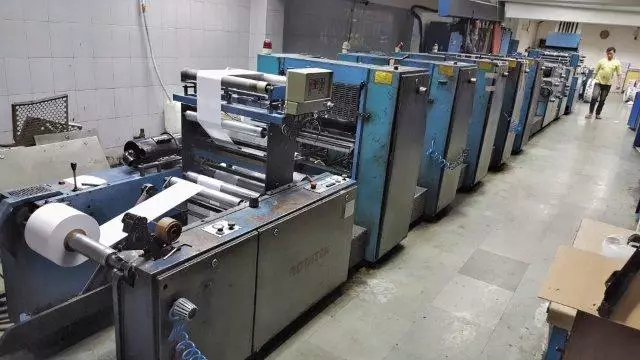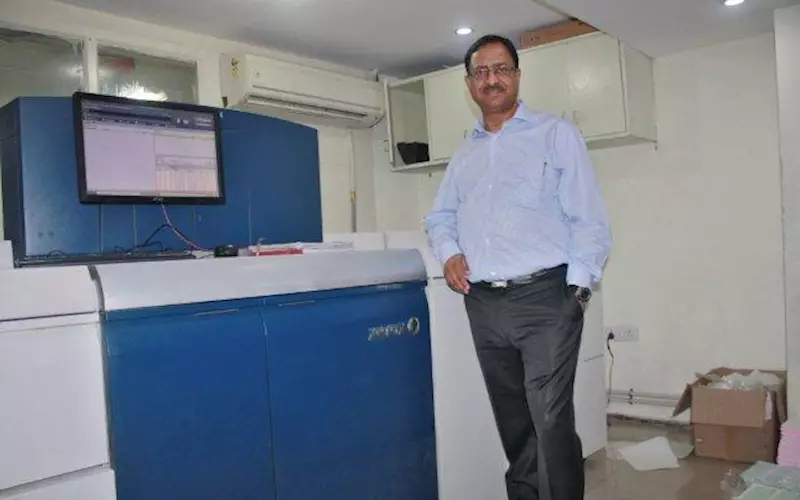Blazing trails of security printing
With everyone opting for netbanking, you thought cheque books were obsolete. This is far from the truth. As Praveen Agarwal, director of Delhi-based Utility Forms explains, it’s still a growth market, at least for the next 10 years. What follows? Agarwal explains the nuts and bolts of security printing to PrintWeek India's Rahul Kumar during a visit to the Utility factor.
03 Aug 2016 | By Rahul Kumar
Incorporated in 1982, Delhi-based security printing press is a dominant player in cheque book printing in India, among other allied activities. Praveen Agarwal started the company along with his brother Gopal Agarwal and friend Rajeev Mathur. All the three directors have different roles and responsibilities. Gopal Agarwal looks after offset production and Rajeev Mathur looks after IT, HR, infrastructure and troubleshooting. Praveen Agarwal looks after the sales, marketing and finance, new projects, paper purchase, exports, among others.
It is an interesting operation structure. The company has no managing director and the work among the directors is divided in such a manner that they are responsible to each other. Beside the Mohan Cooperative Industrial Estate, Utility has facilities in Manesar, Mumbai, Kolkata and Chennai.
Currently, the company’s largest print product is personalised cheque book printing, says Praveen Agarwal. “Beside cheque books, we do a lot of other printing work for banks. Every new account requires a welcome kit and each kit contains several printed documents,” he says.
Today, other than work for banks and financial institutions, the company does personalisation (data filling) and offset printing for examination boards and insurance companies. “We print marks sheets and examination certifications for several examination boards. We also print insurance policies and bar coded proposal forms,” says Agarwal. “We work for power companies too, especially for printing tariff bills.”
The company also provides colour digital printing and commercial printing services to corporate customers and ad agencies. The company is also providing book-on-demand services for several coaching institutes and publishers. The company is also into production of high security event tickets for concerts, football and cricket matches.
Personalised cheque books
Before liberalisation, and to an extent before 2000, cheque books used to be generic, without the name and account number of the account holder printed on each leaf of the book. Agarwal says Utility Forms literally introduced personalised cheque books in India. “Standard Chartered Bank was looking for a partner for personalised cheques. No one was doing this in India at that time. We developed the software and hardware and started offering low cost solutions,” he says.

As demand grew, Agarwal says the company went ahead and established printing units in other cities to meet the requirement of delivery-next-day concept.
“Customers in India are getting world class services these days,” he says. “If you order a cheque book today and if your bank is efficient to transfer the data the same day, then we will produce it and dispatch it within the next 8 to 10 hours.”
Cheque book security
Earlier, cheques were simple, without pre-printed account numbers and name. The process was manual. With the advent of personalised cheques, data control has become streamlined. For personalised cheques, private sector banks took the initiative first and the public sector banks followed suit. Personalised cheque books give a sense of loyalty to the customers and also gives them confidence that their cheque books will not be misused.
Utility Forms uses multiple high speed digital laser printers for personalisation and magnetic ink character recognition (MICR) encoding.
For cheque book printing, the Reserve Bank of India (RBI) sets down the parameters after meeting with industry players, both banks and printers. Agarwal was also in a committee proposed by the RBI comprising 12 bankers and two printers, before they created the CTS 2010 rules for cheque printing.
At the end of the day, printing cheques is a complex process. “Pesonalised cheque book printing requires extreme care and alertness in all the processes and stages. Even one error in a million, can prove to be very costly," he adds.
Agarwal argues that no serious thought has been given on the use of advanced security technology in cheque book printing. “We are still printing cheques with basic security features. The reason is banks do not want to spend more money on additional security infrastructure and higher level of security printing that is required, as it adds to their cost,” he says.
Future of cheques
While cheque books are a thing of the past in many economies, Agarwal believes that in India, the market will grow for at least the next 10 years. In some segments, the use of cheque book is being reduced, owing to the popularity of internet banking, but there has been growth in other segments. “If we want to give cheque books to the entire population, there is a long way to go,” he says.
Utility Forms has projected 900 million cheque leaves for 2016-17. Agarwal says that for other firms, such as Seshasai Business Forms and Manipal Technologies, the figure would be higher than this.
Working with technology
Being a step ahead of trends and technology is the key to survival and success. Agarwal explains how some players went out of business because they were not in the metros. Delivery was an issue and they did not adopt new technologies even when the technologies were available.
“Though our business is printing, a major component of it is IT,” Agarwal says. Utility Forms has a strong IT team and has developed its own software.
The company has a production facility in Mumbai, comprising the same machines, making it a hardware replica of the Delhi facility. The machines include Heidelberg, Xerox and HP laser printers. The Kolkata and Chennai units are much smaller, as demand is less in these two metros.

Future avenues
The company is also an approved agency for Unique Identification Authority of India (UIDAI). “We have done 30 lakh of Adhaar enrollment. UIDAI Adhaar enrollment started around five years ago but we started working on the project around three years back,” says Agarwal. He adds that UIDAI is going to be the issuer of biggest card project of the world and it is important to be a part of it.
He says banks cards are no longer a high growth areas. The growth area is membership cards, health insurance and loyalty cards. It is a mature trend in the West, which is yet to catch on in the country. In the similar vein, LIC has one of the largest databases in the country, but they do not offer loyalty cards yet.
Digital print strategies
Now the company is planning to get into eGovernance activities. Plans are also on for expanding in digital printing, for which the company has recently purchased a Xerox Versant 80. “We are doing POD and books. We are also exploring digital packaging. Volumes of many of our commercial jobs have gone down and they fit into digital printing,” says Agarwal. The company is also planning pre-media digitisation. “We scan and digitise,” explains Agarwal. “We have recently done one lakh pages per day for one of our customers.”
At the end of the day, Agarwal says, in a business you have to make profit. “We have grown for many years at 20% and now growing at 10-15%. The situation is neither good nor bad. We are debt free. We have a ready-to-move factory in Manesar. We are exploring different segments,” he adds.
|
An association for security printers |
|
A security printer is one who has certification from IBA (Indian Banks’ Association). IBA approves and certifies your ability to produce cheques. |
|
QR code for |
Utility Forms has developed a software for Central Board of Secondary Education (CBSE). “We put a QR code on the mark sheets and by scanning it you can check the authenticity of documents online. For ICSE, we are doing mark sheets and marks filling also. We also work for the Institute of Chartered Accountants of India (ICAI). |
|
An Advice for |
Agarwal’s advice to a new entrant? “Please bring in new technology and offer end products and end-to-end solutions to the customer rather that a printed sheet of paper or board. Already there is excess capacity in the printing and packaging industry and more so in the security printing segment. Excess capacity is leading to unhealthy competition, which is not a good for the industry in the long term,” he says. |














 See All
See All